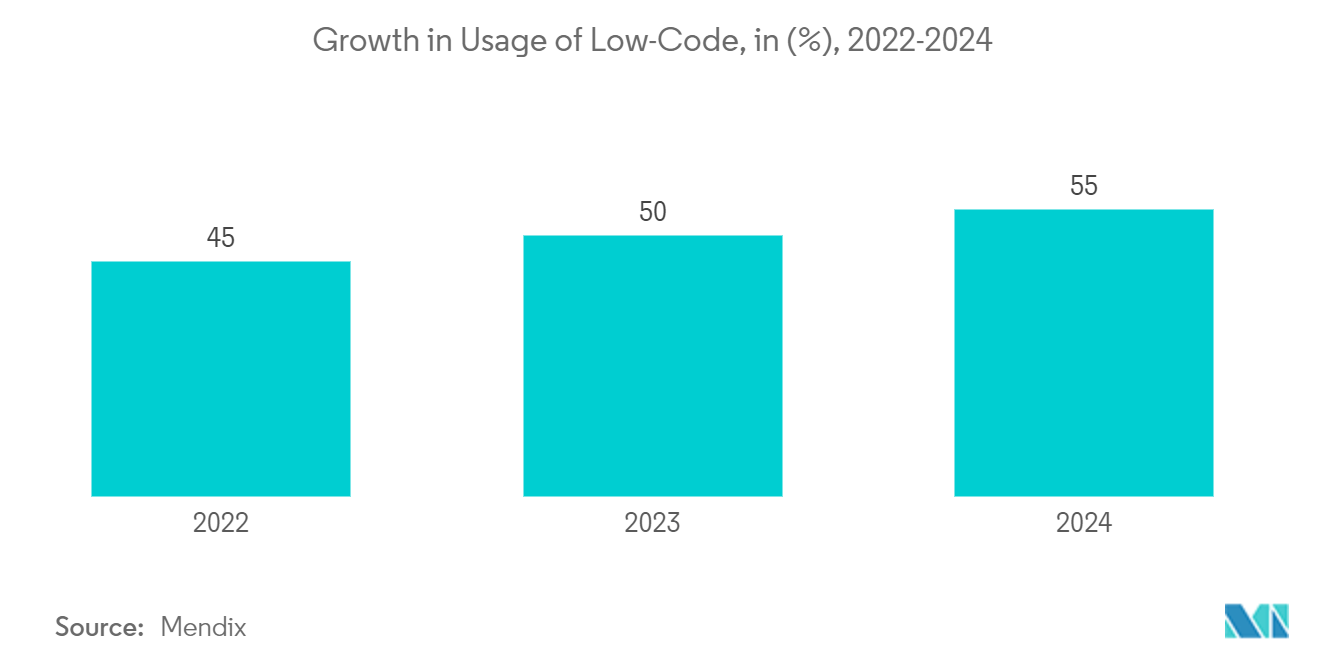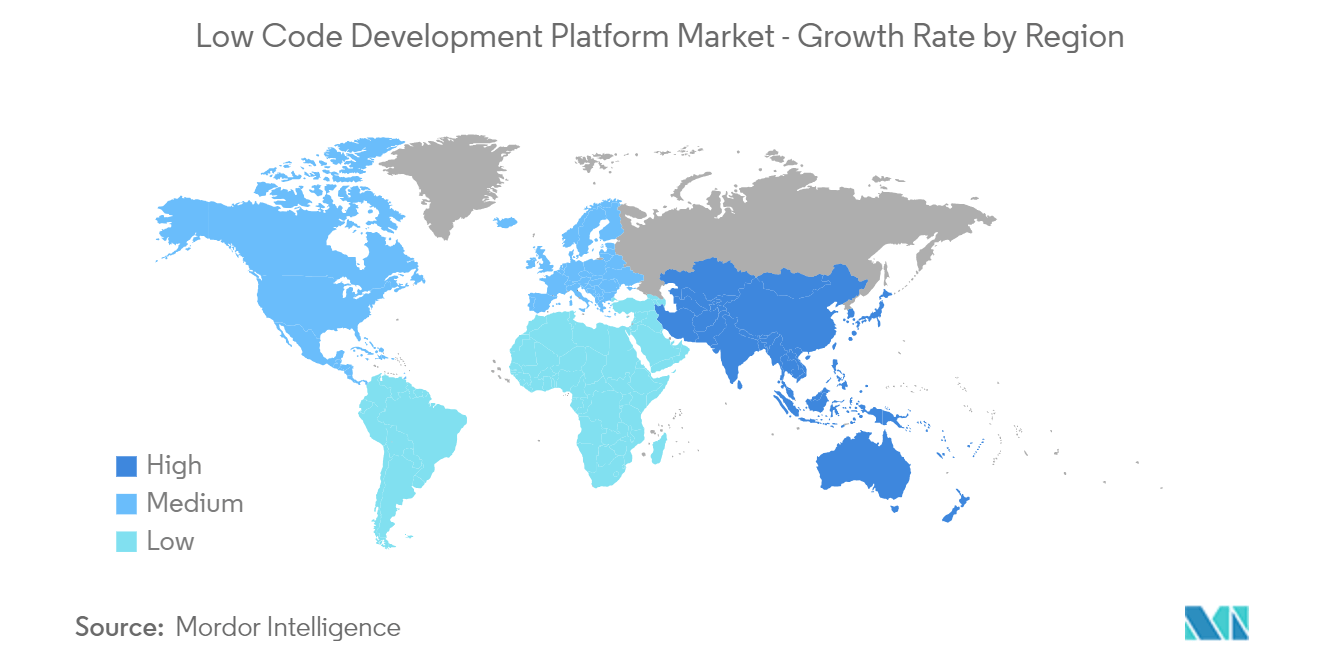Market Trends of Low-code Development Platform Industry
The Information Technology Segment to Witness Significant Growth
- The need for faster software development cycles to keep up with business demands is pushing IT departments to adopt low-code platforms, significantly speeding up application development and deployment. According to Mendix, low-code usage has grown consistently over the past few years. In 2023, about 50% of global coding was done using low code, while in 2024, it is expected to overtake conventional coding to reach 55%.
- Low-code platforms enable IT teams to develop more applications in less time, improving overall productivity and allowing them to focus on more complex tasks that require their expertise. Many organizations use low-code platforms to modernize legacy systems, integrating them with new technologies and extending their functionality without extensive re-coding.
- In June 2023, NTT DATA, a significant player in digital business and IT services, was recognized as a leader by Everest Group in its 2023 report on Low-Code Application Development Services for OutSystems PEAK Matrix Assessment. The assessment analyzed 15 service providers and focused on their strategies, capabilities, vision, and market presence in delivering services on the OutSystems low-code platform.
- IT enterprises played a key role in dominating the low-code development platform market. This is because the firms operating in this vertical need to develop many applications, either for mobile or online (or both), for themselves and their clients. Further, the benefits of low-code development platforms enabled apps to be created, shared, and updated quickly, leading to improved productivity and optimized resource utilization.
- A recent study by Caspio revealed that 63% of low-code platform users possess the necessary skills and resources to meet the demand for custom apps. Additionally, 61% of these users reported successful delivery of custom apps, meeting both deadlines and budget constraints. Moreover, 58% of respondents using low-code platforms expressed confidence in meeting their business's custom app demands.

Asia-Pacific is Expected to Hold the Largest Market Share
- Many countries in Asia-Pacific are undergoing significant digital transformation across various industries, such as finance, healthcare, and retail. Low-code platforms help accelerate this process by enabling faster and more efficient application development. According to IBEF, India has become the world's second-fastest-growing digital economy. The country's digital revolution is expected to be a USD 1 trillion opportunity.
- The increasing adoption of cloud computing in the region supports the growth of low-code platforms, many of which are cloud-native. Cloud-based low-code platforms offer scalability, flexibility, and lower infrastructure costs. The Indian public cloud services (PCS) market is anticipated to reach USD 13.5 billion, registering a compound annual growth rate of 24% between 2021 and 2026. Further, it may propel the growth of the market studied.
- The region is anticipated to grow significantly over the forecast period, owing to the increasing adoption of mobile applications. Asia-Pacific includes many SMEs with limited resources, forcing them to adopt managed services. The governments in the region also adopted a mobile-first strategy to provide better services to their citizens, thereby driving the market.
- Huawei Global Technical Service unveiled its General Digital Engine (GDE) platform, structured around the "1+4+N" model. Here, "1" signifies an open cloud-native platform, while "4" highlights its four key capabilities, i.e., data sharing, intelligent production flow, capability sharing, and integrated low-code self-development. The GDE integrates digital and smart technologies across carriers' processes, from planning and construction to maintenance and optimization. This integration empowers carriers to evolve into digital entities and collaborative partners, fostering innovation across "N" application scenarios.
- Furthermore, in November 2023, OutSystems Japan Co. Ltd rolled out its OutSystems Developer Cloud, a low-code solution tailored for cloud-native application development in Japan. OutSystems Developer Cloud is designed to offer a high-performance, secure, and low-code application platform catering to both developers and enterprises. Its versatility shines as it supports secure deployment in large-scale applications and facilitates end-to-end development from front to back.
- Many digital initiatives and developments, including low-code platforms, are occurring in the region. For instance, in December 2023, the low-code/no-code enterprise platform Kissflow announced a partnership with PointStar Malaysia, a significant cloud transformation firm in Southeast Asia. This strategic collaboration intends to broaden Kissflow's already thriving global partner network. It is expected to offer a modern low-code work platform to aid businesses in digitally transforming their operations.


